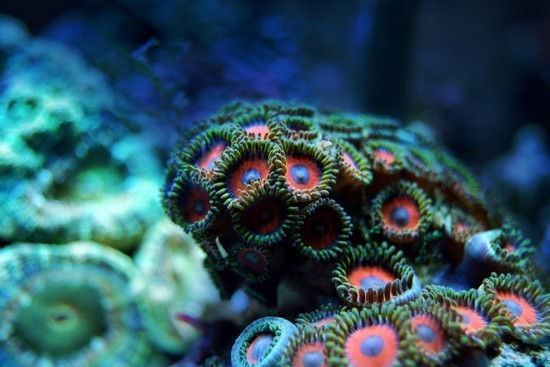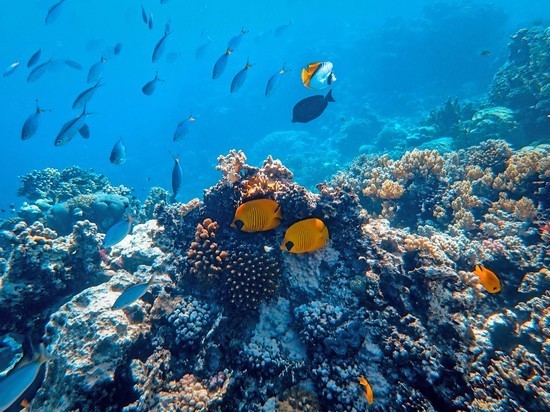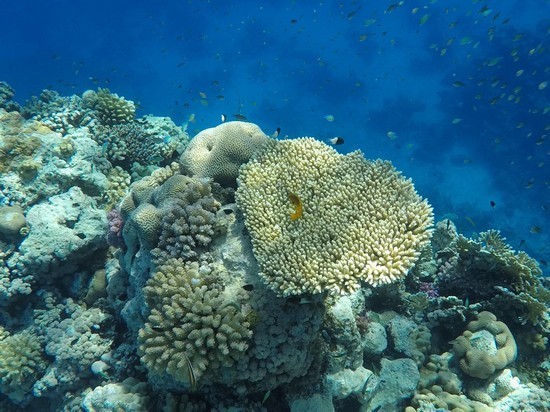Few stop to give a thought to the value of the many beautiful, complex, and
beneficial ecosystems surrounding us. Like the coral reefs that abound in the
Gulf of Aqaba, for example, home to several sub-ecosystems and one of the
greatest attractions in Jordan.
اضافة اعلان
Different coral reefs are heavily studied,
preserved, and even restored, when needed. It is important, then, to understand
the state of the
Red Sea coral reefs, with the life forms they house. It should
not be difficult, seeing that the Red Sea water has a high degree of
transparency, which makes diving all the more inviting.

I visited the
Marine Science Station (MSS) in Aqaba,
run jointly by the University of Jordan and Yarmouk University, and was greatly
impressed by the different facilities there, as well as by the various
important projects being implemented that will potentially lead to scientific
breakthroughs in climate issues, coral restoration, and ocean acidification.
The Gulf of Aqaba corals are generally in perfect
condition. Some, however, are damaged due to their high sensitivity. One of the
station’s main projects, thus, is to study coral reefs and work to restore them
when damaged.
Coral reefs, according to Professor Fuad Al-Horani,
who is an expert in coral biology and ecology and a senior researcher at MSS,
University of Jordan-Aqaba branch, are marine ecosystems distributed in
tropical and subtropical areas; they make up 15 percent of all marine
ecosystems. Aqaba coral reefs encompass the most northern type of reefs, which
contain fringing coral reefs, the most plentiful, and dominant, type in Aqaba.
Horani said the Aqaba coral reefs are marked by
diversity, intensity, and vigor. Aqaba has the highest amount of coral reefs
per area. The lack of rivers, rainfall, and sedimentation are all positive
factors, he said, since water transparency is maintained and no pollutants are
carried into the sea. Moreover, there is no agricultural activity surrounding
the gulf that could possibly lead to the release of pesticides into the reefs.

The sea’s depth, 1,850m protects reefs from both hot
summers and cold winters, and temperature is maintained relatively constant
down where the corals live, added Horani.
The reefs in the Red Sea are well protected and
under regular supervision and monitoring, which helps a lot, for, despite coral
reefs having a high life expectancy, they are sensitive and prone to get
damaged by different factors, including pollutants, increased sedimentation,
fluctuation of water temperature, and salinity.
Coral reefs are a refuge for many organisms; they also represent an ecosystem that contains food for large and small organisms alike ...
MSS has several different facilities and projects
that work to restore and study corals: research on coral reproduction, coral
settlement, and the construction of artificial reefs. The station also has over
30 coral nurseries. It takes local coral reefs seriously and considers their
well-being one of its top priorities.

Coral reefs have both an economic and an
environmental benefit. Regarding the former, they can represent an important
source of income, being a major attraction for tourists and, through the other
activities engendered, indirectly contributing to the economy. Additionally,
coral reefs contain minerals and materials used in the manufacture of
medicines, jewelry, and other human needs.
As for the latter, coral reefs are a refuge for many
organisms; they also represent an ecosystem that contains food for large and
small organisms alike, while also being a nursery for certain species of fish.

Coral reefs are also connected to climate change, as
they could either consume or release carbon dioxide. Interestingly, corals live
in association with a type of algae that resides in the cells of corals and go
through photosynthesis, like plants, and release
CO2 and oxygen. The fish make
use of this process. Equally importantly, corals release a type of mucus
considered a source of food for some organisms. Lastly, corals can act as a
nest for fish to lay eggs in.
As with most projects, there are several challenges
when it comes to the restoration of coral reefs. According to Horani, the most
prominent challenge is finding the source of funding for the several
restoration and maintenance projects that come with a hefty price. Another
challenge is finding enough people to assist in carrying out the restoration
and maintenance projects.

Challenges aside, diving to see the coral reefs is an
unforgettable experience. Taking the time to admire the colorful reefs of Aqaba
is a thrilling experience that should not be missed.
Read more Where to Go
Jordan News



